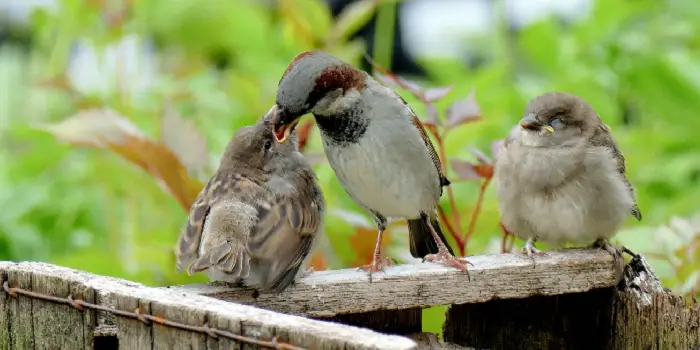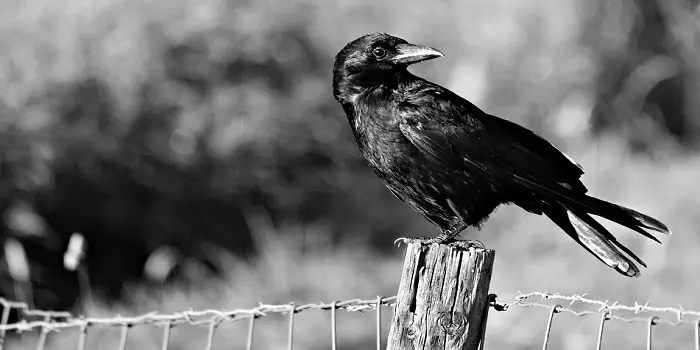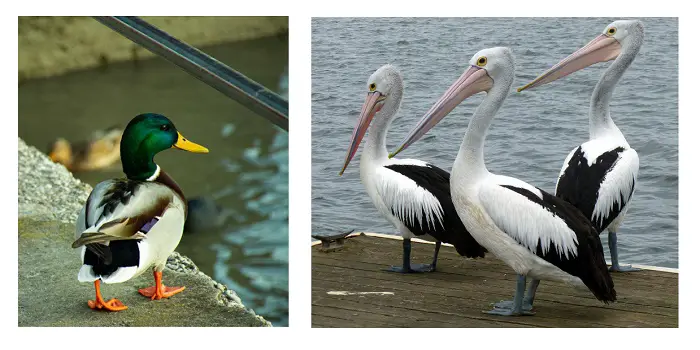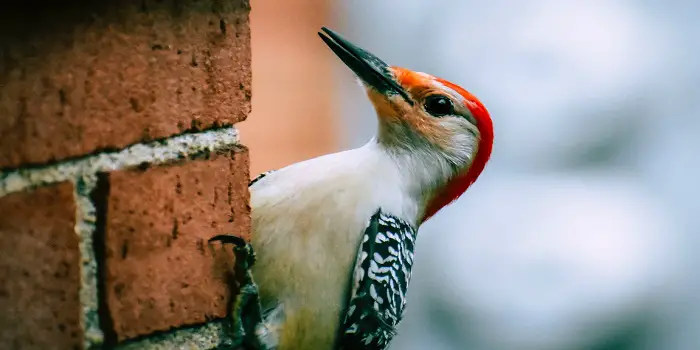
Your home is your haven.
It is where you come to relax after a long day at work, and the mere sight of your home can bring ease to your mind and body.
So, when any damage is caused to your safe place, you are more likely to become furious.
Woodpeckers are a common problem faced by homeowners.
Not only do these local birds create noise that can be highly annoying, but they can also be feasting on your house siding and damaging the aesthetics and the protective exterior of your lovely home.
Woodpeckers are migratory birds that can be extremely common, especially since they are able to survive in a range of natural habitats such as woodlands, savannahs, scrublands, and even bamboo forests.
The most concerning part about having woodpeckers around your home are that they cause damage slowly, which can go undetected until the problem becomes fairly serious.
Why Do Woodpeckers Peck Holes in Siding?
Woodpeckers will start to peck, drill, or drum around your house with the very first break of sunlight they will see in the morning.
Even during sundown, they will peck as long as there is light seen.
If you have heard or seen a woodpecker hammer on your house siding, you may be wondering why they choose to do so.
There are four common reasons why woodpeckers hammer on homes, including:
1. The Noise:
Hammering on the siding of a house releases a loud noise that helps the bird mark its territory and even attracts a male mate.
If the birds are always on your siding, for this reason, they are likely to move away once breeding seasons begin in spring.
2. Forming a Nest:
In case the woodpeckers are looking to form a home inside your house siding, the hole they hammer is likely to be large and round-shaped.
Since nesting holes are usually made at the beginning of spring before breeding season, it is recommended for you to evict the woodpeckers from your home before April / May.
3. Finding Food:
Woodpeckers eat different kinds of insects, including leafcutter bees and grass bagworms.
Unfortunately, these can be readily found in your house siding.
If these birds are searching for food in your home, the holes they hammer will be irregular and particularly small in size.
However, having insects in your siding is not a great sign, and you will have to hire an exterminator to remove the insects from your house exterior.
4. Storing Food:
Woodpeckers love their food, especially acorns.
If your house is located in the West, where acorns are readily available, the woodpeckers may be hammering holes in your siding to stash their fresh acorns and save them for later.
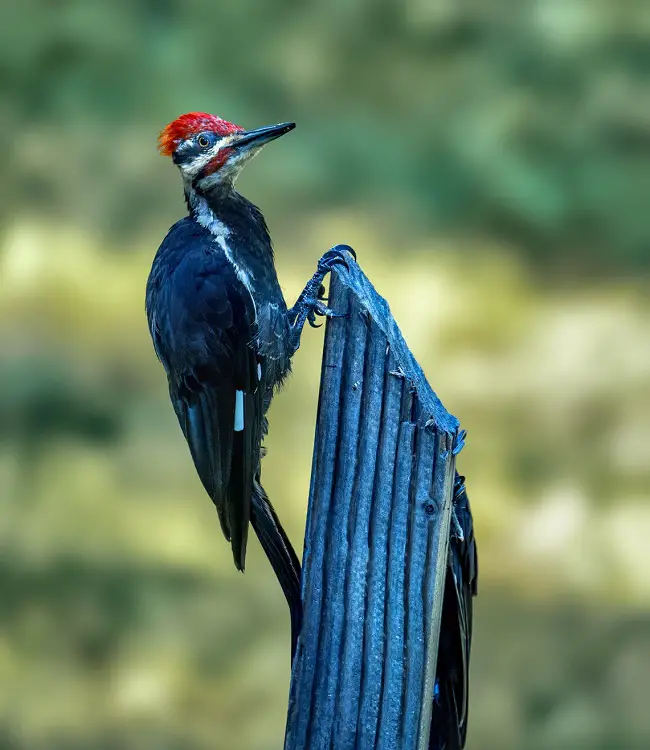
How to Stop Woodpeckers from Damaging the Cedar Siding?
In case you are not willing to spend a large amount on remodeling your house, there are still many ways to prevent woodpecker damage from your cedar siding.
Here are some of the easiest ways to get rid of the woodpeckers:
1. Visual Deterrents
Here is the truth: woodpeckers are petrified of reflective material, especially if it keeps moving.
To prevent woodpecker damage, you could easily hang CDs or pie tins on your siding, keeping the birds away for a long time.
For this method to work, you will need to use very shiny items – and luckily for you, some special bird repellent discs are now readily available in the markets.
While these discs are shiny enough to keep woodpeckers away, they also appear to be decorative hangings for your house.
However, this may not be a permanent solution.
Once the woodpeckers discover that there is no imminent threat from these hanging discs, they are likely to return and continue hammering your siding.
2. Electronic Repellent
Since hanging discs can be too overwhelming for some people, electronic woodpecker repellents are the perfect discreet solution to your problems.
These devices can radiate distress calls that scare birds away from the area.
Unlike the visual deterrents hack of using CDs from your home, you will have to invest in a high-quality electronic woodpecker repellent for this method to work.
Depending on which device you choose to buy, there can be limitations on how long they work effectively.
3. Distract them with Food
If the woodpeckers keep hammering your siding in search of insects to eat, giving them some proper food of their own could be a great solution to the problem.
Woodpeckers particularly enjoy suet cakes, which are conveniently placed inside a woodpecker suet feeder where they have space to rest and finish their food with ease.
By setting these away from your house exterior, you can distract the woodpeckers away from your sidings and simultaneously be providing some birds with food.
Depending upon how many woodpeckers you can usually spot around your house, it is recommended to have 1-2 woodpecker suet feeders set up.
4. Give them Shelter
Since woodpeckers may be forming holes in your siding to create homes for themselves, a great solution would be to provide them with a woodpecker birdhouse.
If the birdhouse is appealing enough, the woodpeckers will likely steer clear of your house exterior and take up residence there instead.
It is recommended to set up a woodpecker birdhouse away from your house and to add a suet feeder along with it.
By ensuring both food and shelter for the birds, they will be satisfied enough to leave your house alone.
5- Apply liquid bird repellent
Another humane way to get rid of woodpeckers from your sidings (or just anywhere) is by using liquid bird repellents and gels.
These products usually contain methyl-anthranilate, that’s smelly and bitter.
When applied around the siding and rooftop, these liquid or gel repellents can irritate and keep woodpeckers away for long.
Not only for keeping woodpeckers, but you can use this product for repelling a variety of other birds naturally without causing them any harm.
6- Use Spikes or Netting for Woodpeckers
If all the above options to deter the woodpecker birds fail, using physical barriers like spikes and netting can work very well.
You can just install the woodpecker spikes on the surface you want, which will help stop the birds from coming and pecking that area.
If you want to use netting instead of spikes, hang them about a foot away from the pecking area like cedar sidings.
And it will stop the access of birds to these areas.
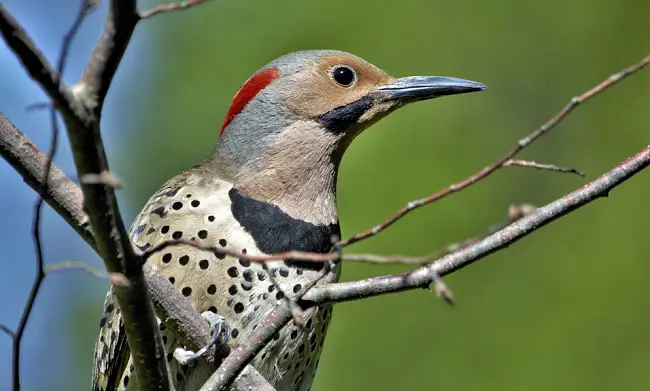
What Siding can Woodpeckers Damage?
While it is true that all kinds of siding can fall prey to the unavoidable holes made by woodpeckers, some types of siding are straightforward to damage.
These include:
1. Cedar Shake Siding
This material is commonly targeted for drumming, nesting, and even finding insects.
With cedar shingles, this siding is particularly easy to damage the birds.
2. Tongue and Groove Cedar Siding
Similar to the regular cedar siding, this type is also favorable for the woodpeckers due to the material.
3. Wood Siding
You could call this the woodpecker’s favorite. Wooden material allows the woodpeckers to quickly create large, small, or even multiple small holes in the siding.
While this is a dream come true for the woodpeckers, it is a nightmare for the homeowner.
4. Wood Composite Siding
This type is slightly less attractive for woodpeckers, but they may continue to damage it with constant drumming to create noise and attract a mate.
5. Vinyl Siding
Vinyl is not a popular material amongst woodpeckers.
However, vinyl siding on the house almost always means that the fascia boards are wood, leading to further woodpecker damage.
According to many, woodpeckers are associated with bad luck and death.
Particularly when they are seen drumming trees, it can be an announcement of death.
While there are many others who believe that it’s a bird that symbolizes secret treasures, the underworld, etc.
What Type of Siding is Woodpecker Resistant?
Although I have listed all the types of siding that are vulnerable to woodpecker damage, it is also important for you to know what kind of siding would be resistant to the damage.
If you are greatly annoyed by the noise and siding destruction made by woodpeckers, here are a few new siding options to consider:
1. Fibre Cement Siding
This material is made of cement, sand, and cellulose – making it tough enough for woodpeckers to stay far away from it.
Since it is awfully hard for the birds to make holes in them, they will be unable to find insects inside the siding or make room to store their food.
Additionally, fiber cement is so strong that woodpeckers would not be able to create a large enough hole for nesting purposes.
Fibre cement siding also prevents the typical woodpecker drumming as it does not create any loud noise when hammered against.
By choosing to opt for this siding, your home exterior is likely to remain woodpecker resistant throughout the year, and you can enjoy being inside your home without any unnecessary noise from the outside.
2. Brick Exterior
While it is not a typical remodeling option for homes, a brick exterior is considerable if you are building your own home or looking to relocate permanently.
A brick home is definitely a woodpecker-resistant material as the birds will be unable to hammer on any exterior siding – making your life hassle-free and your home damage-free.
However, investing in a brick exterior may be extremely costly – especially since these homes are usually the highest priced.
3. Stone Siding
Since hollow holes cannot be made inside stones, woodpeckers will likely stay far away from this kind of siding.
While a stone siding may require a hefty amount of money to install, the benefits are significant as you will be free of any yearly repair costs incurred due to woodpecker damage.
However, it is important to remember that while a stone siding will keep woodpeckers away, your fascia, trim, and chimney may still be vulnerable to woodpecker damage.
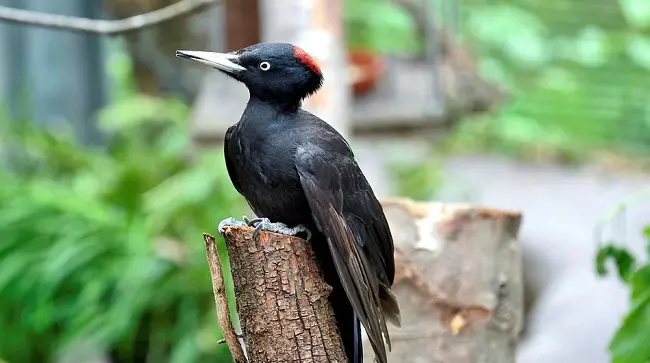
Other Related Questions:
Do woodpeckers eat wood?
Woodpeckers knock on wood in search of food. They do not eat the wood.
In other terms, Woodpeckers use their bills as a tool to find the insects out of wood which is the food they eat.
It’s not the wood they hit on that serves as food for them.
What is the most common woodpecker?
Downy Woodpecker is known to be the most widespread woodpecker species.
Downy woodpeckers are one of the smallest woodpeckers with about 6 ¾ inches long bodies.
They have an all-white breast and belly with a white stripe down the middle of the back.
Their wings and tail are black in color with a few white spots.
Much like a male hairy woodpecker, the male downy also has a red patch at the back of the head.
What is the rarest and largest woodpecker?
The ivory-billed woodpecker is most likely extinct and is the rarest woodpecker.
Out of all the woodpeckers, the Pileated woodpecker is the largest.
It’s native to North America, and the excavations caused by them can break the smaller trees in half.
The Final Word
I understand that having woodpeckers around your house can be annoying, but instead of passing your problems onto another house owner, I recommend giving the birds what they want.
A simple suet feeder and a birdhouse are likely to do the trick – keeping the woodpeckers satisfied and your sidings safe.
So, why not try these tricks without harming the birds?

Welcome to ProShieldPest.com. I am Tina Jones. I have been working as a pest removal professional in Winslow, Arizona lately. At present, I love to spend my time with my family as a retiree.
Here I share all my knowledge and experiences to help people understand better how they can stop pests at their homes without actually killing them. Hopefully, the information you will find here will help in safeguarding your home! You can check more about me here.

